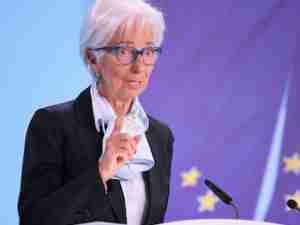The Biden administration’s announcement Friday of a 200% tariff on imports of Russian aluminum is likely to offer little support to a domestic industry that has already largely shifted to other sources of the metal.
While the proclamation cited the need to cushion US producers from higher global energy prices following Russia’s invasion of Ukraine, the levies probably won’t do a whole lot to boost profits and production for domestic and North American metal manufacturers like Alcoa Corp., Century Aluminum Co. and Rio Tinto Plc.
The US imported about 200,000 tons of aluminum from Russia in 2022, according to Commerce Department data, accounting for just about 3% of total imports. That dropped almost to zero in October as the administration weighed a ban, sparking concern that domestic buyers could be stuck with the material. Global aluminum prices have slumped by 40% since reaching a record in March following the invasion, weighing on producer margins and share prices.
“There’s basically no imports of semi-finished products that contain Russian aluminum, not from Mexico and not from elsewhere,” said Jorge Vazquez, the managing director of researcher Harbor Intelligence. “This is a proactive measure to make sure the US doesn’t open an opportunity for market participants to game the system and start exporting semi-finished products that contain cheap relative-to-the-market Russian aluminum.”
Alcoa, Century and Rio, along with many other aluminum companies doing business in the US, for months have lobbied the White House to slap devastating sanctions, bans or tariffs on Russian aluminum, supply that they’ve argued is unethical and also hurts their profits.

Other Sources
With the new 200% tariff working effectively as a ban of Russian imports, US buyers will have to ramp up imports from other nations to fill that supply gap. Alternative supplies are already coming from the Middle East, according to Harbor, with India, Argentina and Australia filling in the rest of the need.
Making the burden even more manageable is that US consumers have for years been weaning themselves off Russian material amid escalating government actions against so-called oligarchs. Aluminum buyers were left scrambling in 2018 after the US sanctioned United Co. Rusal, with investors and suppliers concerned about supply, plant closures and work-force reductions. The penalties were lifted early in 2019 after an agreement with the Treasury forced Rusal billionaire founder Oleg Deripaska to relinquish control over the company.
Market participants from traders to buyers to producers and parts makers expressed a level of relief, saying that as of now it doesn’t appear the White House’s actions will upset the normal course of business.
By the time reports emerged late last year that the administration was weighing additional actions, American dependence on Russian metal had shrunk to just one-third of where it was in 2016 and 2017, according to the US Aluminum Association.
It won’t be clear until the US releases a list in the next few days if the tariffs will extend to bumpers, wheels or other parts used in automobiles or airplanes, but market participants suggested it will be in line with the products listed in the Trump administration’s Section 232 aluminum tariffs levied back in 2018.
The London Metal Exchange, the global benchmark for aluminum prices and physical storage of the metal, said in a statement that it is carefully considering the potential implications of the US proclamation.
The LME last year launched a discussion with the global aluminum market on whether to ban new deliveries of Russian metal onto the exchange. The bourse ultimately decided against such a move, saying it shouldn’t “seek to take or impose any moral judgments on the broader market.”



